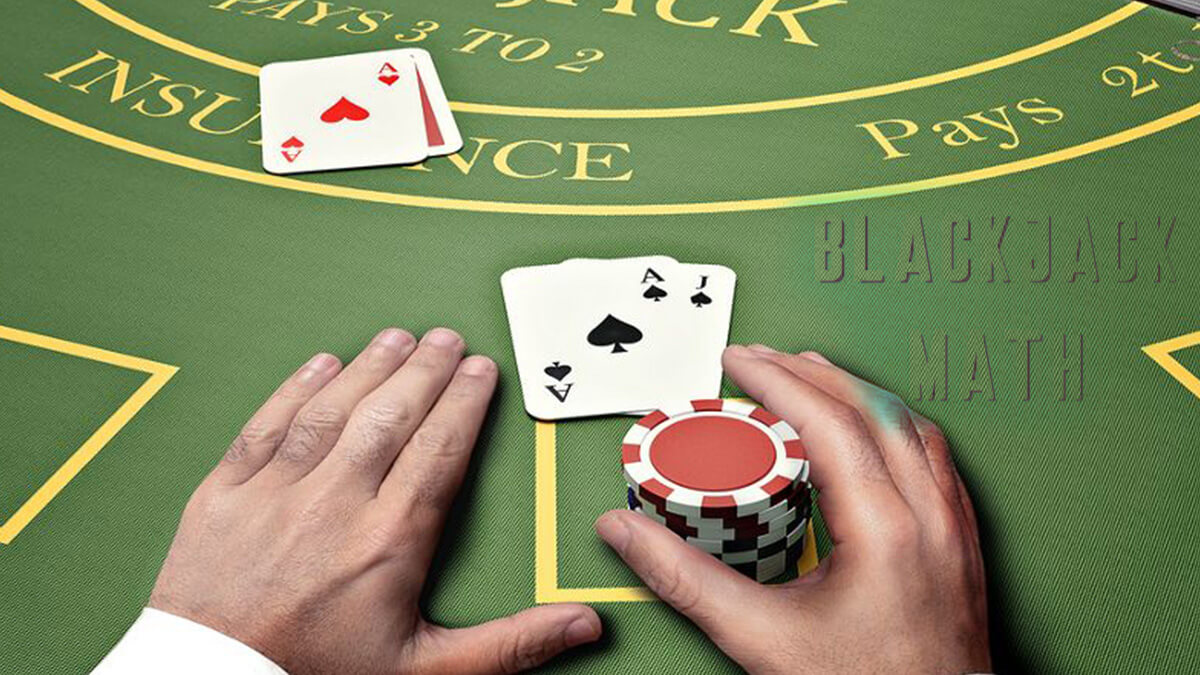I didn’t learn how math worked with blackjack for many years. And my results during those years were bad. Once I learned how blackjack math works and started using it my results improved a great deal.
You have to learn more about what blackjack math is and how it works if you want to get better blackjack results. That is what this article is going to help you with.
Here’s a list of 6 math lessons that every blackjack gambler needs to learn. With just a little bit of work you can understand how blackjack math works and how to use it to win.
1 – Simple Blackjack Math Using Cards
Blackjack uses a regular deck of cards, which helps you make decisions. Blackjack games don’t use the suit of the cards, except for a few side bets in some places. So all you have to worry about are the ranks of the cards.
This is true whether the blackjack game you’re playing has 1 deck or 8 decks of cards. Each deck has 13 different ranks of cards, and 4 of each rank. In other words, there are 4 6’s and 4 8’s in every deck.
The reason why this information is useful is because you know what cards you’ve seen and what cards are left in the deck or shoe. And with this information you can make better blackjack decisions.
For Example:
If you get a 7 and a 4 for your first 2 cards, you have a total of 11. You also know that any card worth 10 gives you 21, and there are 16 of those cards. You also know that any 9 or 8 also gives you a good total and there are 8 of those 2 cards. Any other 3 7’s gives you 18, and the 4 6’s give you 17.
That means that 31 out of the remaining 50 cards improve your hand to a 17 to 21 total. And no card in the deck is going to make you bust. This is why doubling on an 11 is so profitable.
You can use simple math like this on every hand you play at the blackjack table.
2 – Blackjack Return to Player and House Edge Math
Math is also involved with how much the casino makes from each blackjack game and the odds you have of winning. Each blackjack game, depending on the rules and how you play your hands, has both a base house edge and a base return to player percentage.
The house edge and return to player percentages show how much you can expect to lose and how much the casino can expect to make. The return to player percentage is the difference between the house edge and 100%. And the house edge is the difference between the return to player percentage and 100%.
If you know the house edge is 3%, then you know that the return to player is 97%. Or if you know the return to player is 98% you know the house edge is 2%.
These numbers are important because you have to play the blackjack games with the highest return and lowest house edge to have the best chance to win.
3 – Using Math to Pick Blackjack Games
In the last section you learned the importance of house edge and return.
But how do you use this information to help you pick the best blackjack games to play?
The short answer is that you need to learn the rules combinations that offer the highest return and find blackjack games that use these rules. The problem is that there are literally 100’s of possible rules combinations. I’ve found it easier to memorize what the better rules are and play in games that have as many of these good rules as possible.
This isn’t a perfect solution because some places where you play real money blackjack simply don’t offer tables with a good set of rules. Another thing that you can do is look up the return or house edge based on the specific set of rules that you find using an online search.
Here’s a quick lesson on good blackjack rules. The table must pay 3 to 2 for blackjack or you shouldn’t play. The dealer standing on soft 17 is better than when they hit. The more opportunities you have for splitting pairs and doubling the better. Surrender is better than not being able to surrender.
4 – Blackjack Math and Strategy
In the first section you learned about simple blackjack math based on the deck of cards that’s used when you play the game. You can take this another step to help you improve your chance to win using strategy.
You learned how to use math to determine that doubling with an 11 if profitable. You can use the same type of math to run the possibilities for every blackjack hand that you can start with and every card the dealer can start with.
It takes a long time to run all of the different combinations and it takes a lot of math work to figure out the best way to play each combination. But you can skip all of the math and simply use a blackjack strategy card.
But you need to understand why you need to use blackjack strategy. The reason why using blackjack strategy is so important is because the math shows that there’s only 1 way to play each combination in the most profitable way. Math dictates good blackjack strategy.
5 – Blackjack Insurance Math
You shouldn’t take the insurance offer when you play blackjack. This is common advice given in good blackjack books and articles. And it’s good advice because the math shows that it’s a bad wager.
I’m going to show you the math behind the blackjack insurance wager. The important thing is to not use it, but I want you to understand why you should decline blackjack insurance.
Blackjack insurance isn’t really a part of the base game. It’s a disguised side bet that looks like it’s tied to the base blackjack game.
The bet is whether or not the dealer has a card worth 10 points in the hole. The best pays 2 to 1 when the dealer has a 10 point card, and loses on every other card.
The odds of the card being worth 10 points are 4 to 9. The deck has 4 ranks of cards worth 10 points and 9 ranks that aren’t worth 10 points. This can also be expressed as 9 to 4 against.
Look at what the bet pays, 2 to 1, and the odds, 9 to 4. The bet doesn’t pay an equal or better amount than the odds of the down card being worth 10 points.
The pay needs to be 2.25 to 1 or the odds need to be 8 to 4 for the bet to be fair.
6 – Card Counting Math Explained
The best use of math in blackjack is to use the power of card counting. Card counting is 100% about math, and if you use it the right way you can turn the house edge around and play blackjack with an edge over the casino.
Here’s basically how card counting works. When the remaining cards have more high cards than low cards you have a slight edge. When you have an edge if you bet more you can win enough to overcome the amount you lose when you don’t have an edge.
The way you track the amount of high and low cards left is to track the high and low cards as they’re played. This is much easier than you probably believe. I can’t give you a complete run down of card counting here, but it works and you can learn how to do it.
Card counting is the best way to gamble with an edge. It’s going to be challenging, but it’s worth the effort to have a chance to win.
Conclusion
Blackjack math starts with a simple understanding of the cards used in the game and how these cards are used. The next step is understanding what return to player and house edge are, and how these things influence how much you win or lose.
When you understand the math behind these things you can use it to pick the blackjack games with the best rules, which in turn give you the best chance to win. This all leads into using math to make the best strategy decisions at the blackjack table.
The final 2 things you need to know about blackjack math are how insurance works and how math and card counting go together.
Michael Stevens
Michael Stevens has been researching and writing topics involving the gambling industry for well over a decade now and is considered an expert on all things casino and sports betting. Michael has been writing for GamblingSites.org since early 2016. …



